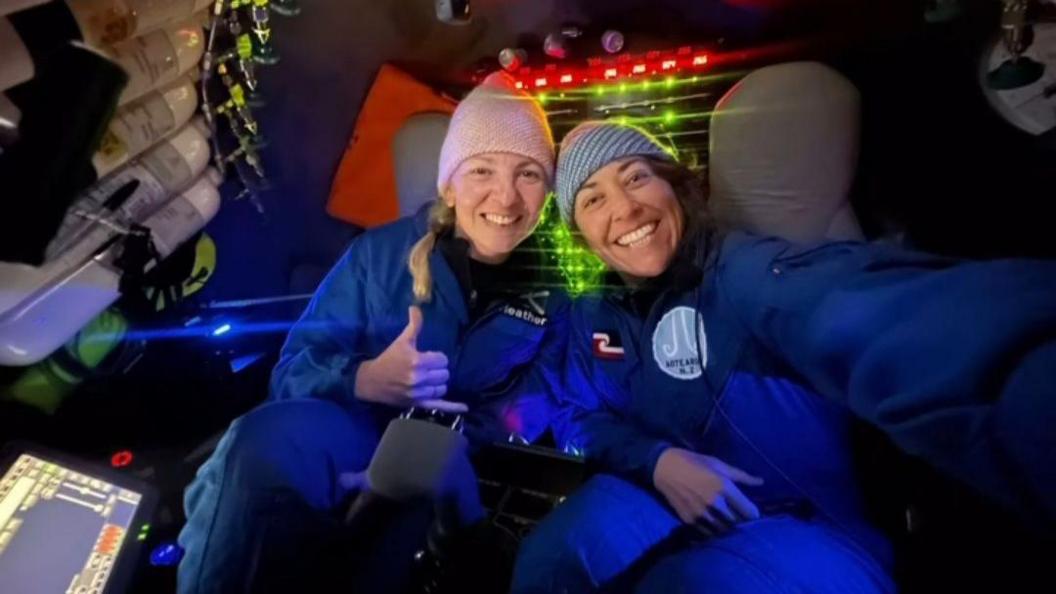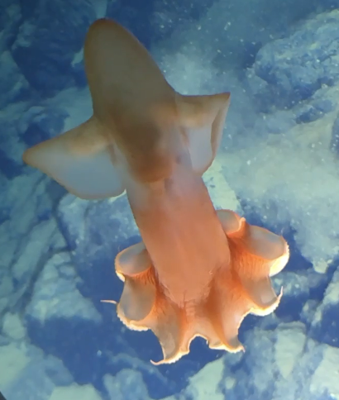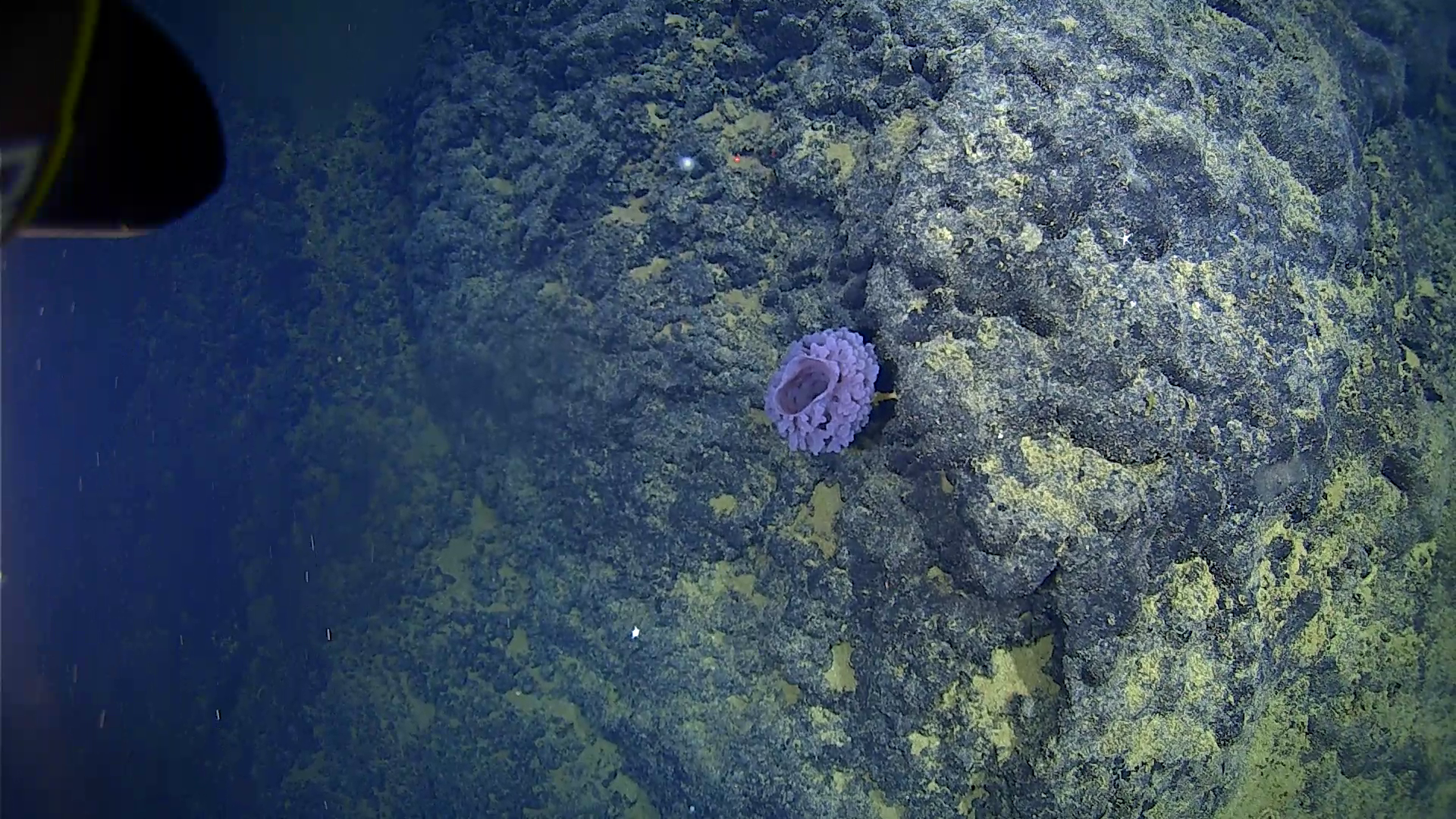Record dive 'like climbing Everest under water'

Heather Stewart (left) and submersible pilot Kate Wawatai (right) in the submersible
- Published
A Scottish scientist has described her record-setting deep sea dive as the underwater equivalent of climbing Mount Everest.
Heather Stewart from Edinburgh inadvertently set a new world record by being part of the deepest dive ever to be carried out by an all-female-crew.
She completed the feat in the Bakunawa submersible in the South Pacific Ocean with her colleague Kate Wawatai from New Zealand.
The almost 10-hour dive - part of a research trip on 16 April - took them 8,000m under the surface. Everest reaches 9,000m in the opposite direction.
Speaking to BBC Scotland News after the mission, marine geologist Prof Stewart, 43, said she and her pilot partner were unaware they were going to break a world record.
"I didn’t realise until that day. Kate, as we were descending, said 'I think this might be the first time that an all-female submersible crew has descended this deep'."
The area they are researching is called the Nova-Canton Trough, a geological feature called a fracture-zone that is 400 miles long and 8,000m deep.
The two women and a group of experts are based in Samoa, where it takes four days to sail from there to the research area.
They are taking part in series of four expeditions, which started at the beginning of April, each lasting 21 days.

RV Dagon, the ship the team sail on that carries technical equipment. The green submersible, Bakunawa, is the sub used to descend
The group is now on its fourth and final expedition, with Prof Stewart set to return home at the end of May.
During the dive, the team gathered data to look at the ecological, biological, geological and oceanographic questions about how that area of the world functions.
Prof Stewart said it was an "amazing opportunity" and compared the scale of the dive to the world's highest mountain.
"It's almost 9,000m high and we’re studying a feature that’s 8,000m deep.
"We’re kind of exploring the underwater equivalent of a mountain range in scale. Instead of going up, it’s a long linear hole in the sea floor rather than a set of mountains."

Deep-Sea Snailfish, Pseudoliparis
Despite working as a marine geologist since 2001, Prof Stewart only did her first dive in 2019.
She has now completed five, with her first ever deep dive below 6,000m being a record breaker.
Despite her relative lack of diving experience, Prof Stewart says she only gets a "bit" nervous.
"It isn’t something that most people would ever get the opportunity to do, so the technology isn’t necessarily familiar.
"I think nerves are good because it shows a bit of respect for what we’re doing as well, it’s not easy and not a lot of people do it, but I’m not scared."

Rare Cirrate Octopus at 5,800m water depth
During the series of dives, she has had the opportunity to see features which nobody has ever seen before.
“We’re down there doing research but at the same time, it's amazing seeing the sea floor and the features that we’re seeing for the first time. We’re the only people that have ever seen these," she said.
As a geologist, Prof Stewart is looking at the structure of rocks and sediment, trying to unpick the processes that are going on at these depths.
She is also studying how geological features such as fracture zones act as pathways for deep ocean currents, which are key in regulating the Earth's climate.
"I’m also seeing these amazing sponges, fish and octopus and lots of other fauna that live in the deep sea."
She said that time spent on the sea floor goes "in the blink of an eye" because you don’t know what you're going to come across, so it’s "really exciting".

Sponges live in the depths, attached to basalt rocks
Prof Stewart and Mrs Wawatai have daughters and nieces and hope to inspire young women to go in to Stem [science, technology, engineering, and mathematics].
“My kids are still young. I talk to them about me going away. It sounds really mushy but they are really proud of me," she said
"If either of them wanted to go in to a career in research, that would be totally awesome.
"Something that Kate and I do talk about a lot, even if we just inspire a handful of kids to consider going into a Stem career, that's truly our job done."